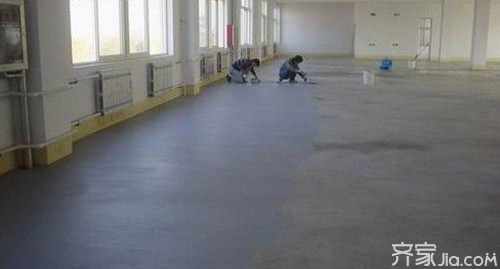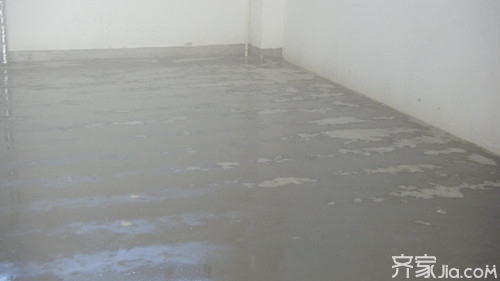As we all know, cement mortar is often used on the floor surface of buildings, and it is prone to cracks, sand formation, and insufficient strength. These common problems will directly endanger the quality of the house and affect its use. Here we introduce: the reason of sanding on the surface of cement mortar and its treatment.

Analysis of the cause of sand formation on cement mortar:
(1) The water-cement ratio of the cement mortar mixture is too large, and the mortar strength decreases. If there is excessive water consumption during construction, the strength of the surface mortar will be greatly reduced; at the same time, the construction will cause bleeding of the mortar and further reduce the surface strength of the ground.
(2) Failure to understand the basic principles of cement hardening, improper arrangement of processes, and the fact that the bottom layer is too dry or too wet, resulting in premature or excessively late ground calendering.
(3) Inappropriate conservation. After the cement floor is completed, if the number of days for maintenance or conservation is not enough, the moisture in the surface layer will evaporate quickly in the dry environment, the hydration of the cement will be affected, the hardening speed will be slowed down, and even when it is severe, the hardening will be stopped, resulting in dewatering of the cement mortar and affecting the strength. And anti-wear ability. In addition, if the surface is well-worn and watered and cured in less than 24 hours, the surface of the ground will be “softâ€, which will also lead to large areas of peeling, exposed sand, and sand after use.
(4) When the cement floor has not reached sufficient strength, it will walk on or perform the next process construction, which will cause the ground to suffer friction, scratches, impacts, etc., resulting in sanding on the ground. This is especially true at low temperatures.
(5) When the cement floor is under low temperature construction in winter, if the doors and windows are not closed or there is no heating facility, it is prone to freezing. After the cement mortar is frozen, the strength will be greatly reduced, and the adhesive force of a layer of cement sizing around the aggregate will be destroyed after freezing, forming loose particles. Once the person walks, the sand will also play a role.

Cement mortar ground sand treatment method:
Must be fully watered and moist to the grassroots. On the day before construction, it is recommended to moisten the grassroots to make it wet, so that the surface of the grassroots is clean, but be careful not to accumulate water, ensure that the surface layer is firmly bonded to the grassroots, and construction of cutting joints to prevent cracking of the ground.
It is necessary to pay attention to controlling the time for applying the cement paste and increase the adhesion between the surface layer and the base layer. The degree of grass-roots dryness is controlled at 0.4~0.5. Be careful not to sprinkle the slurry after cementing.
The water cement ratio of cement mortar should be less than 0.4, and its standard viscosity should not exceed 3.5 cm.
Cement mortar ground maintenance:
The maintenance of the cement mortar ground should generally be carried out 24 hours after the calendering, and it is usually covered with a wet material or sprinkled with water. When conditions permit, lime water or yellow mud can be used at the door for impoundment (water depth of about 20mm), and the effect will be better. In winter and spring, curing can be started 48 hours after calendering. The curing time should be no less than 7 days (slag cement should be extended for a suitable curing time). During the period of maintenance, it is forbidden to carry out other construction operations on it. Otherwise, the ground strength will not be enough, and the ground will appear dusting and sanding.
Maintenance should be timely, it is well known that cement mortar enters the hardening stage after final setting. The hardening of cement does not mean the end of hydration, but it continues to deepen into the interior of the cement particles, but the hydration of the cement must be performed in a humid environment, if in the dry air, due to the continuous evaporation of water, Hydration will be affected, slow down the hardening rate, or even stop the hardening, so as to reduce the strength of the surface layer, serious ground will quickly appear ash, and even the ground sanding phenomenon. As the hydration of cement is carried out relatively quickly in the early stages and slowly in the later stages, early conservation is particularly important.
Editor's summary: The causes and treatment methods of cement mortar ground sanding are introduced here. I hope I can help you. For more information, please pay attention to this website.
Entrance ground floor wooden floor ground tile price list balcony floor decoration basement floor
0
Anfeng Magnets Manufactruing Co.,Ltd , https://www.anfengmagnetics.com
